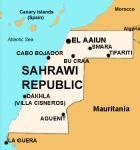 Western Sahara is the last colony in Africa. It has been today’s silent conflict for decades, but on 13th November 2020, Morocco launched a military operation against peaceful protesters in Guerguerat, near the Mauritanian border; It accused the Polisario of blocking the highway, which is key to trade with the rest of Africa. On 14th November, the SADR declared war on Morocco. By its actions, Morocco violated the 1991 ceasefire agreement with the Western Sahara Liberation Movement Polisario, which ended a 15-year war.
Western Sahara is the last colony in Africa. It has been today’s silent conflict for decades, but on 13th November 2020, Morocco launched a military operation against peaceful protesters in Guerguerat, near the Mauritanian border; It accused the Polisario of blocking the highway, which is key to trade with the rest of Africa. On 14th November, the SADR declared war on Morocco. By its actions, Morocco violated the 1991 ceasefire agreement with the Western Sahara Liberation Movement Polisario, which ended a 15-year war.
Western Sahara has fought for more than 40 years for its sovereignty under international law. The Sahrawis of this time have lived geographically dispersed in refugee camps in Algeria, the the conflict remains unresolved and Western Sahara remains occupied. Rabat controls around three quarters of the Western Sahara, a vast swathe of desert on the Atlantic coast, including its phosphate deposits and its lucrative ocean fisheries. The Polisario controls the rest.
The Sahrawi
The Sahrawi culture is a mix of Berber, Black African and Arab elements. It shows mainly Berber people core characteristics with Arab cultural elements. Sahrawis are composed of many tribes and are largely speakers of the Hassaniya dialect of Arabic. Sahrawi population is ~570,000 – in Western Sahara there still lives some 160,000 Sahrawi, ~250,000 Sahrawi live in Algeria, of them nearly 100,000 in refugee camps and part of the diaspora in neighboring countries, Europe or even Cuba.
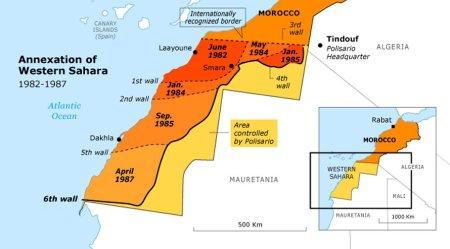
The Polisario
The Polisario, the national front for the liberation of Western Sahara, was founded in 1973 to demand independence from Spain, which ruled the region for nearly a hundred years. In 1974, Spain granted autonomy to the region and announced that it would hold a referendum on sovereignty. The referendum never materialized.
The aim of the Polisario movement, which originated in the student movement, was to put an end to Spanish colonialism in the region; this goal was achieved, but at the same time the neighbors – Morocco and Mauritania – conquered the area where Polisario wanted autonomy and possible independence. The Polisario declared the Sahrawi Arab Democratic Republic (SADR) born in Bir Lehlou, Western Sahara, on February 27th, 1976. A war broke out.
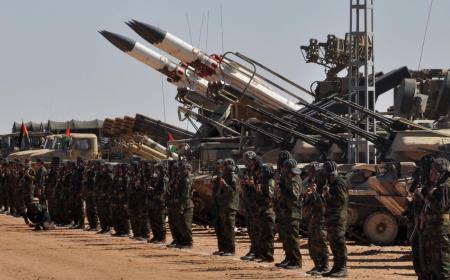
Western Saharan separatists parade to mark 40 years of conflict (MEE/Massina Benlakehal)
The Conflict
Morocco Air Force bombed Western Sahara with napalms and phosphorus bombs and much of the indigenous Sahrawi of Western Sahara fled across the desert to Algeria. Mauritania withdrew from the region in the summer of 1979 after signing the so-called Argel’s agreement. The agreement recognizes the right of the Sahrawi people to self-government, while Mauritania waives all territorial claims in Western Sahara. The Moroccan army took over the territory ruled by Mauritania, but Mauritania recognized the SADR on 27 February 1984.
The 1991 UN-assisted peace agreement ended 15 years of fighting between Morocco and the Western Sahara Polisario. The peace treaty included a promise to hold a referendum on independence. Morocco has systematically blocked the terms of the peace agreement. The UN peacekeeping operation in Western Sahara, MINURSO, has failed to address violations of the peace agreement.
Occupation vs Intependence
Morocco has been occupying Western Sahara illegally since 1975. From the point of view of international law, Western Sahara has the right to independence, but for years Morocco has prevented a referendum. According to a 1975 report published by the International Court of Justice in The Hague, there is no historical evidence that Morocco ruled the region. Morocco continues to violate human rights in Western Sahara. Sahrawi are widely discriminated against in employment and education. The display of one’s own national symbols in the Occupied Territories is strictly forbidden and any action to promote independence is suppressed.
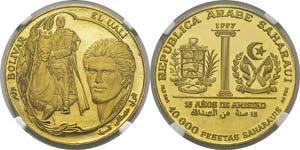
The EU supports the UN line, which in turn advocates a just and lasting solution that safeguards the sovereignty of the Sahrawi people. However, among other things, the EU has a fisheries agreement with Morocco, which applies to the resources of Western Sahara, contrary to the wishes of the Sahrawi people. The controversy over Western Sahara is also strongly economic. In addition to rich fishing waters, Western Sahara has extensive phosphate reserves and iron ore deposits.
The UN Security Council has adopted more than 100 resolutions in support of this. As of 2017, the independence of the SADR had been recognized by 84 UN member states, but 44 of them have either suspended or revoked the recognition. However, several states that do not recognize the independence of the SADR consider the Polisario to be the legitimate representative of the people of the region but not the refugee government of the independent state.
Morocco regards the Polisario as a separatist movement and the SADR as a puppet state used by Algeria against Morocco. Morocco considers Western Sahara to be a historical part of it, but according to a report published by the International Court of Justice in The Hague in 1975, there is historical evidence that Morocco has never ruled the region. As a result, the conquest of the area was contrary to the 1960 Declaration of Sovereignty of the Colonial Powers. A protest movement has also sprung up among Moroccans, as the country is ruled by a small elite. Morocco has successfully frozen protests by censoring the internet, obstructing the work of journalists and disseminating false information.
Bottom line
Contrary to the position of the International Court of Justice that Western Sahara is a non-autonomous region, will continue to occupy the region and exploit its natural resources. Morocco has also relocated 350,000 civilians and 20,000 troops to Western Sahara, despite international humanitarian law governing armed conflict prohibiting the occupying state from relocating its civilian population to its occupied territories. An estimated 20,000 people have died as a result of the illegal occupation and the war that ensued. The disappearance of thousands of Sahrawis by Morocco remains unexplained and unpunished.
The fighting between the Western Sahara Liberation Movement Polisario and Morocco ended as early as 1991, but it has started again as Morocco launched its a military operation against peaceful protesters in Guerguerat, on November 2020. It remains to see if the conflict will be solved by violence or would international community finally take actions leading justified peace and independent SADR.
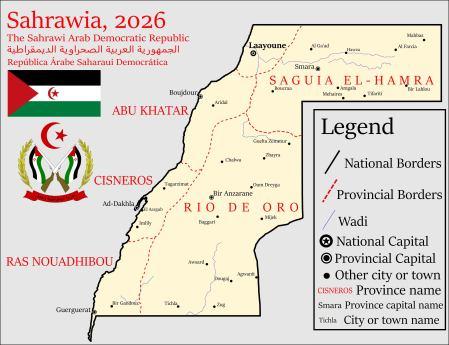
Visio 2026 by Sahrawia
This article first appeared in Conflicts by Ariel Rusila blog

